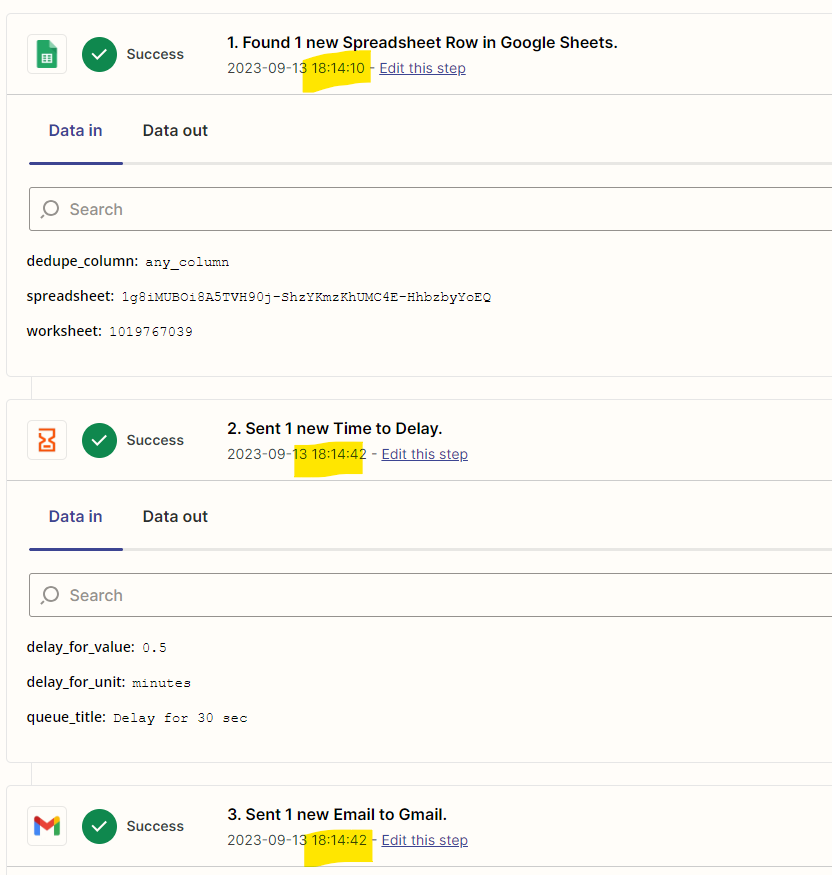Hi!
I find myself having to send emails from my google account to some customers with kind of the same messaging, so i use google sheets for this.
But, the issue i have is that i would like the Zap action to not attempt to send all emails (each contact is a new row) at the same time whenever i paste the database on the sheet.
So, for example:
- I usually copy/paste around 50/100 emails at a time, and paste them on the sheet that is being triggered when new rows appear.
- I want it to take all of those contacts (rows) and send one by one, with a delay on it, lets say, 5 minutes or something like that.
- I know how to set a delay between actions, but if i paste 50 contacts two times, it will attempt to send 50 contacts at the same time each time the delay time is reached.
So i want for the zap to somehow drip the emails with some delay between it but dont know how.
Im using Google sheet New Row Added → Send email from google account
Hope this makes sense! 😁
Question
Delaying Email Send from a Google Sheet
This post has been closed for comments. Please create a new post if you need help or have a question about this topic.
Enter your E-mail address. We'll send you an e-mail with instructions to reset your password.






